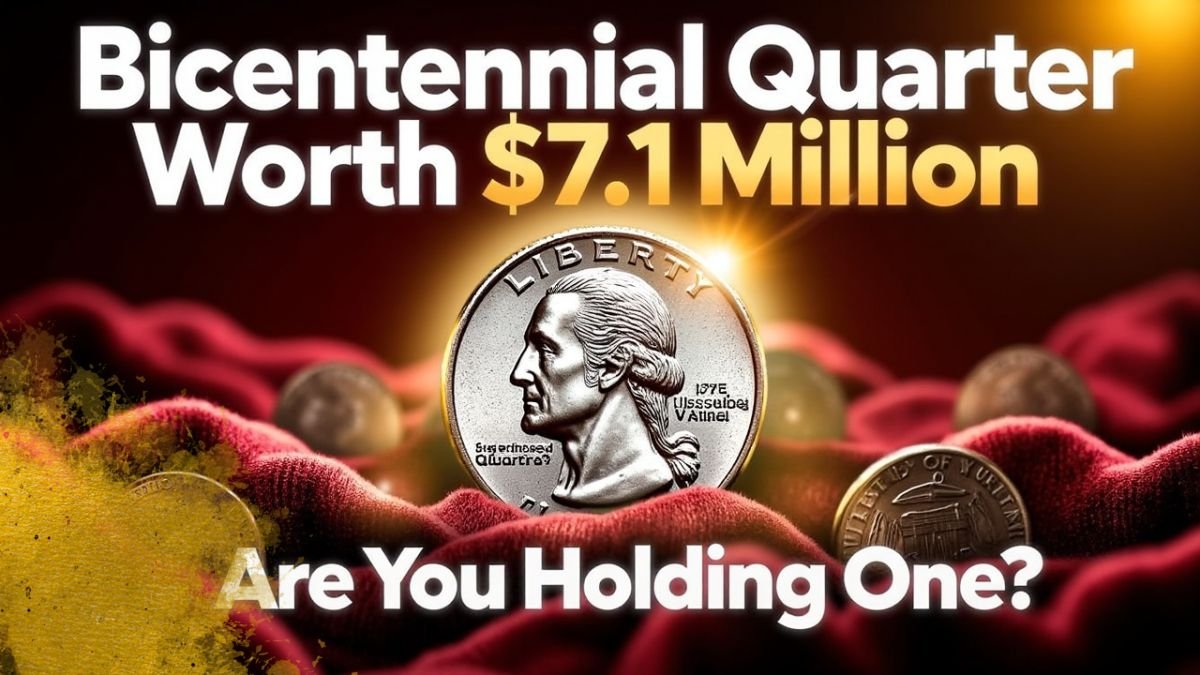Among the adventures in coin collecting, where history meets aesthetics and scarcity holds intense meaning, few coins have the same power to inspire as the ubiquitous Bicentennial Quarter, which cost $7.1 million.
This special object, struck in commemoration of the 200th anniversary of the United States, has acted as a knell to numismatists and a tantalizing object of desire to all who are interested in the limit of history, economy, and chance. Let’s delve into the remarkable story behind this unique piece of American coinage.
The Bicentennial Celebration
As the United States approached its 200th anniversary in 1976, a wave of patriotic fervor swept across the nation. To mark this anniversary, the government has decided to produce commemorative coins. Among them was the Bicentennial Quarter which was designed to be a per day reminder of the rich history and the strong soul of the Nation.
A Unique Designcess
Millions of these quarters were struck at the Philadelphia, Denver, and San Francisco minting facilities, a common medium of circulating coinage. This gave everyone an opportunity to possess a part of history in their own hands. Little did the coin makers realize that, out of the millions of coins in production, one coin would be a numismatic legend.
Read More: The $76 Million Bicentennial Quarter and 6 Other Coins That The Potential To Make You Millions.
An Unexpected Discovery
The tale behind the $7.1 million Bicentennial Quarter is as much a tale of luck as it is a tale about the coin, itself. For decades this amazing artifact has been itinerant, unknown, unnoticed, passed from hand to hand. Its true value remained hidden until a seasoned coin collector made a routine purchase at a local convenience store. Above all, there was a change that was appreciated by one quarter, which was notable for its oddities.
What Makes It Special?

The enormous $7.1 million claimed retail value of this Bicentennial Quarter is a result of a series of minting flaws that make it rare, i.e.
- Wrong Planchet: The coin was struck on a planchet prepared for an entirely different denomination, a rare and collectible error.
- Off-Center Strike: Even if the design was not perfectly centered in the coin (i.e., a portion of the design was confined and a portion in the coin was empty).
- Double Die: The components of the design show the effect of doubling, i.e., the die struck the coin twice with a slightly offset configuration.
- Unique Metal Composition: Examination showed a minor departure of the metal composition from the norm of Bicentennial Quarters, making it possible to have been one of an experimental cast.
Preservation State
What is more, the extraordinarily pristine condition of the coin makes its worth even higher. Although circulating for a long time, it is almost unworn and thus appears to have been reserved during an early period, perhaps by some passing by who commented on its unusual nature, but did not grasp its deeper meaning.
The Valuation Process
Existing the find, the coin was submitted to the most prestigious of the numismatic grading services where the object was subjected to scrutiny and certification by specialist. Coins are usually graded on a scale from 1 to 70, and 70 is represented by a perfect, uncirculated specimen. This particular Bicentennial Quarter received a high grade, not just for its condition but also for the uniqueness of its minting errors.
And with the announcements of the coin authentication, prestigious auction houses also noticed. The unique errors, historical implications and original condition of the artifact resulted in a record-breaking sale price at $7.1 million.
Conclusion – $7.1 Million Bicentennial Quarter
The story of the 7.1 million dollar Bicentennial Quarter is one of remarkable chance in coin collecting. It highlights the power of a focused eye, augmented by chance, to reveal buried riches in the open, obvious. This numismatic marvel not only commemorates a pivotal moment in American history but also serves as a beacon of hope and excitement for collectors worldwide, reminding us that sometimes, the most extraordinary finds are just a pocket’s reach away.

